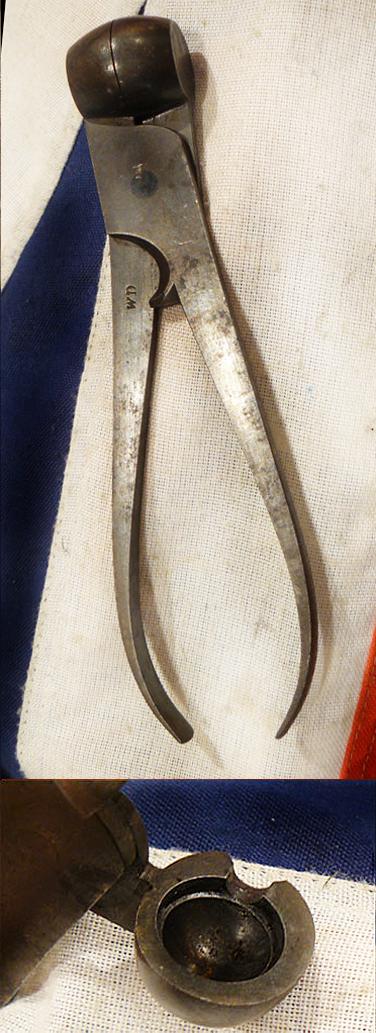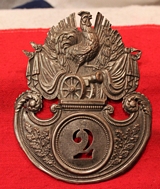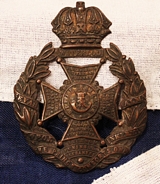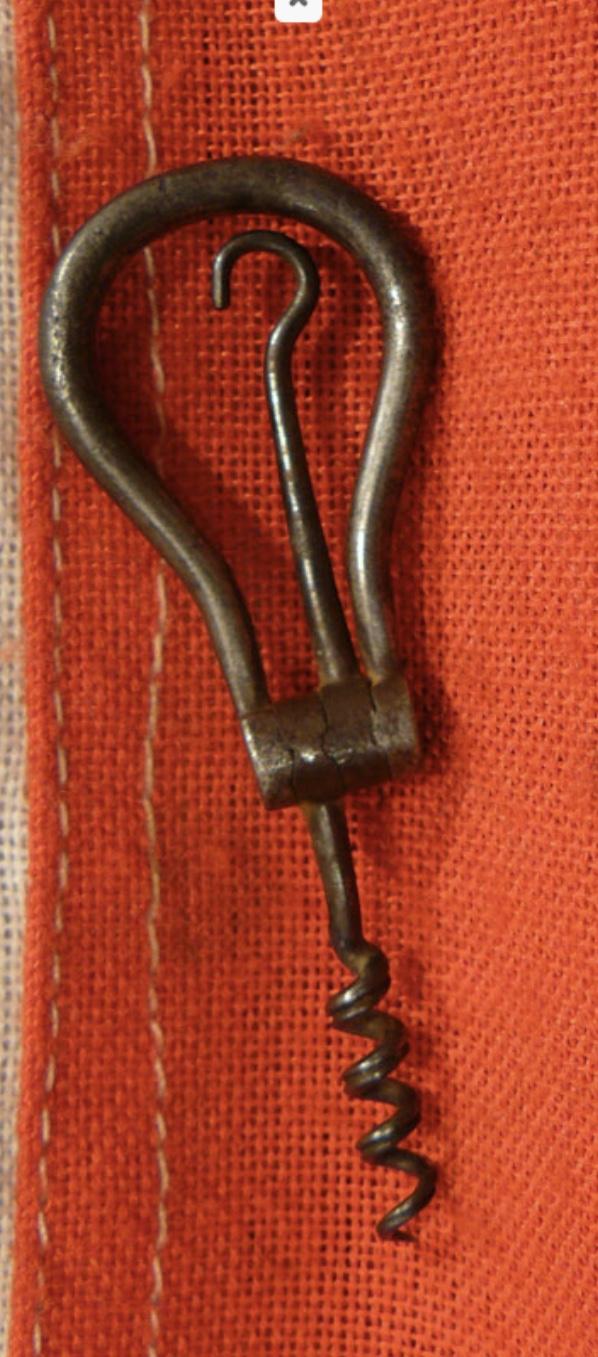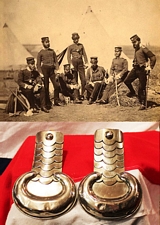Antique Arms & Militaria
Congratulations To Nat Edwards, The New Master of the Armouries at the Tower of London & Director General
Royal Armouries newly appointed director general, Nat Edwards, joins the Royal Armouries from the renown Thackray Museum of Medicine in Leeds.
Nat Edwards was previously the chief executive officer of Thackray Museum of Medicine in Leeds where he has overseen a £4m refurbishment of the venue since joining in 2018. He has worked in the sector for more than 30 years, including roles at the Science Museum Group, National Library of Scotland, National Trust for Scotland and Glasgow Museums.
The Royal Armouries has sites in Leeds, HM Tower of London and Fort Nelson in Hampshire. It employs about 190 staff and receives about 2 million visitors a year across its three venues.
Courtesy of the Museums Association
We were most honoured to receive a personal invitation by Nat to his first formal patrons event at the Tower, including a personal tour of the Line of Kings. read more
Price
on
Request
An Antique Australian Aboriginal Boomerang With an Elaborate, Super Chip Carving and Decoration
Stone carved, with beautiful chip-carving and a good patinated surface. Over decorated snake and symbol design.
The Australian aboriginal peoples boomerang has probably been around for at least 40,000 years. It is an iconic symbol associated with Australia. What most people do not realize is that many antique aboriginal boomerang don’t actually come back. Only a few of the many forms of old boomerang return.
Antique aboriginal boomerangs come in a large variety of sizes, forms, and decoration. Different boomerangs had different functions. This variation reflects the social and cultural diversity of Aboriginal people. Aboriginals were not one group but had over 200 language groups.
As mentioned most old boomerangs were not made to return. The function of most boomerangs is to hit and kill whatever they are thrown at. Some boomerangs were for hunting but others were for fighting. Some huge antique boomerangs were up to 2 metres long and function like clubs. The majority of aboriginal returning boomerangs were for hunting birds
The Aboriginal boomerang has great aerodynamic properties. It is capable of going 200 metres compared to a throwing stick, which will only travel 60 metres.
Aboriginal Boomerangs could have engravings or be painted with ochre for ceremonial purposes. These designs are not decorative. Designs relate to the Dreamtime ancestors and totems. Collectors like boomerangs with designs and simple chip carved examples.
The Aboriginal boomerang is also used as a digging tool, for making fire and as a club.
Collectors like boomerangs that are old, unique, and rare or have elaborate designs.
60cm x 7.8cm read more
335.00 GBP
Napoleonic Wars 10 Bore 'Brown Bess' or Heavy Cavalry Pistol Scissor Mould
This is a most rare piece of Napoleonic Wars infantryman's and heavy dragoon trooper's combat kit, but curiously the second we have had this year which is very unusual. A mould to create bullets for the 10 bore 'Brown Bess' musket and the 10 bore 1796 full bore Heavy Dragoon pistol. A .75 inch mould that creates a .68 inch ball. These military 10 bore 'Brown Bess' ball moulds are now very rare indeed, and a great addition to a collector that owns an original 'Brown Bess' or the 1796 Heavy Dragoon pistol that would want their original Napoleonic Wars scissor ball mould. Slight pitting overall, some were made by William Davies but this one is not maker marked read more
435.00 GBP
A Very Good Victorian 92nd Gordon Highlanders Silver Cross Belt Badge
92nd Regiment (Gordon) officer's crossbelt badge, silver plated 4 pointed star with St Andrew cross with battle honours, Sphinx below XCII Highlanders, with three threaded screw mounts.
In December 1878, the regiment was ordered to Afghanistan where it was engaged in various security operations following the outbreak of the Second Anglo-Afghan War. In October 1879, it took part in the Battle of Charasiab, where the regiment captured three hills, thereby turning the enemy's flank. Major George White received the Victoria Cross for his part in this action. A further Victoria Cross was won by Lieutenant William Dick-Cunyngham at the Siege of the Sherpur Cantonment on 13 December 1879. At the end of August 1880, the regiment formed part of the force which marched under General Frederick Roberts from Kabul to Kandahar, and at the Battle of Kandahar on 1 September 1880, formed part of the 1st Brigade, which led the advance in sweeping the enemy out of the closely wooded enclosures along the western slopes of the hill on which the village of Gundi Mullah Sahibdad stood.
Instead of returning to the United Kingdom in 1881, the regiment was diverted to Natal to serve in the First Boer War. The regiment participated in the disastrous Battle of Majuba Hill on 27 February 1881. After capturing the hilltop in order to dominate the Boer line, the force of 350 British soldiers of the 58th and 92nd Regiments including a number of Royal Navy gunners, found themselves exposed to heavy and accurate fire early on the following day. This was followed by an assault by 2,000 Boers; despite a desperate last stand, the survivors were swept from the summit. read more
185.00 GBP
A Very Good Steel 'Belted Bullet' Mould Marked 14 and WD (William Davies)
A rare collectable for a 19th century 'two-groove' British rifle, such as the Brunswick. Cavity measures .750" at the bottom of the grooves, with approx .70” ball. This mould casts a spherical ball with bands for two-groove rifling. stamped by maker W.D. William Davies who was one of England's best bullet mould makers in the reign of King George in England, and later during the early part of Victoria's reign. This mould is in excellent plus condition.
The rifle with belted ball two-groove rifling that was at the pinnacle of rifle development in the 1830s and 1840s. With multi-groove rifling it was difficult to ram the ball down particularly if the barrel was fouled up and often a hammer had to be carried to belt down the ramrod.
With a belted ball, a belt was created around the bullet and two corresponding deep grooves were cut in the barrel. The ball was carefully located in these grooves and it could be easily pushed down. Since the two-groove rifling was deep cut, there was no possibility of the bullet stripping and quite high charges could be used. Belted ball rifles tended to be in the bigger calibres as they were too tricky to load in smaller calibres.
Overall length 7.5" read more
325.00 GBP
A French 1830's Belltop Shako Helmet Plate 2nd Regiment
Louis Philippe I (6 October 1773 - 26 August 1850) was King of the French from 1830 to 1848 as the leader of the Orleanist party. As a member of the cadet branch of the Royal House of France and a cousin of King Louis XVI of France by reason of his descent from their common ancestors Louis XIII and Louis XIV of France, he had earlier found it necessary to flee France during the period of the French Revolution in order to avoid imprisonment and execution, a fate that actually befell his father Louis Philippe II, Duke of Orleans. He spent 21 years in exile after he left France in 1793. He was proclaimed king in 1830 after his cousin Charles X was forced to abdicate in the wake of the events of the July Revolution of that year. His government, known as the July Monarchy, was dominated by members of a wealthy French elite and numerous former Napoleonic officials. He followed conservative policies, especially under the influence of the French statesman Francois Guizot during the period 1840-48. He also promoted friendship with Britain and sponsored colonial expansion, notably the conquest of Algeria. His popularity faded as economic conditions in France deteriorated in 1847, and he was forced to abdicate after the outbreak of the French Revolution of 1848. He lived out his life in exile in Great Britain. read more
125.00 GBP
A Victorian, Stilleto Style, So-Called Prostitute’s Dagger
With very attractive pressed ivorine handle made to simulate ivory. A prostitutes dagger was so called due to their attractiveness and useful size for concealment by unaccompanied ladies abroad after dark. Of course they would never have been sold as such by retailers, and the term has entered the vernacular of collectors probably even after the time they were actually made, however, like the term 'mortuary hilted swords' that bore the engraved visage of the king in the hilt from the English Civil War, they were never actually called that until almost 200 years later. They are attractively designed elegant daggers, just such as this one, with a slender and most efficient blade. Prostitution became a major concern and a focal point for social reformers in the 19th century. Concerns were seen everywhere including the literature of notables such as Charles Dickens. He created characters (some of which may have had real life versions) like Nancy in Oliver Twist, and Martha Endell in David Copperfield.
No one knows for certain, but there were somewhere between 8,000 and 80,000 prostitutes in London during the Victorian Age. It is generally accepted that most of these women found themselves in prostitution due to economic necessity.
There were three attitudes towards prostitution – condemnation, regulation, and reformation. Dickens adopted the last and was intimately involved in a house of reform called Urania Cottage. No scabbard Blade 4.25 inches, overall 8.25 inches long read more
275.00 GBP
Rifle Brigade Victorian OR’s Helmet Plate
An excellent example, die-stamped blackened on two loops. Within a laurel wreath surmounted by a Guelphic Crown resting on a tablet inscribed Waterloo, a Maltese cross with lions between the arms and ball finials to the tips. The arms of the cross bear numerous honours; the wreath bears honours Sevastopol Alma Inkerman. Between the bottom arm of the cross and the wreath, three scrolls Lucknow over Peninsula with Ashantee below; across the base of the wreath, a scroll The Prince Consort’s Own’
9.5cm high read more
175.00 GBP
A Wonderful Georgian ‘Grand Tour’ or Campaign Travelling Miniature Foldaway Corkscrew and Hook
In delightfully blued steel and only 3.25cm long when folded. Made to be used with very small, corked, glass bottles containing everything from gun oil, for gun cases, to writing ink, poisons or colognes. And as a button hook for shoes, riding boots or gaiters. It could be contained in a travelling officer and gentleman’s gun case, campaign toilette case, sabretache or even waistcoat pocket. It would make a delightful additional accessory for a cased set of duellers, a single pistol or hunting guns. Circa early 1800’s read more
125.00 GBP
A Very Good Pair of Early Victorian Crimean War, British Dragoon Tunic Shoulder Scales
Epaulette is a type of ornamental shoulder piece or decoration used as insignia of rank by armed forces and other organizations. Epaulettes bear some resemblance to the shoulder pteruges of ancient Roman military costumes. However their direct origin lies in the bunches of ribbons worn on the shoulders of military coats at the end of the 17th century, which were partially decorative and partially intended to prevent shoulder belts from slipping. These ribbons were tied into a knot which left the fringed end free. This established the basic design of the epaulette as it evolved through the 18th and 19th centuries.
From the 18th century on, epaulettes were used in the French, British and other armies to indicate rank. The rank of an officer could be determined by whether an epaulette was worn on the left shoulder, the right shoulder or on both. Later a "counter-epaulette" (with no fringe) was worn on the opposite shoulder of those who wore only a single epaulette. Epaulettes were made in silver or gold for officers, and in cloth of various colours for the enlisted men of various arms. By the early eighteenth century, epaulettes became the distinguishing feature of an officer, leading to officers of military units without epaulettes to petition their government for the right to wear epaulettes, to ensure that they would be recognized as officers. Certain cavalry specialties wore flexible metal epaulettes referred to as shoulder scales such as these. During the Napoleonic Wars and subsequently through the 19th century, grenadiers, light infantry, voltigeurs and other specialist categories of infantry in many European armies wore cloth epaulettes with wool fringes in various colours to distinguish them from ordinary line infantry. "Flying artillery" wore "wings", similar to an epaulette but with only a bit of fringe on the outside, which matched the shoulder seam. Heavy artillery wore small balls representing ammunition on their shoulders. read more
345.00 GBP






